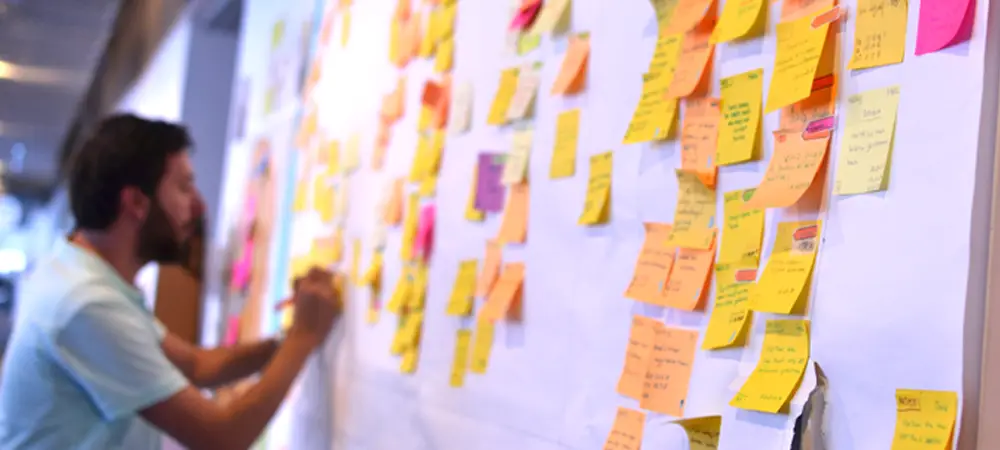Agile Education: Empowering Learners through Dynamic Teaching and Learning


“Success today requires the agility and drive to constantly rethink, reinvigorate, react, and reinvent.” – Bill Gates
In the fast-paced world of education, where students’ needs are diverse, and the landscape is constantly evolving, traditional teaching methods often fall short in meeting the demands of the modern learner. However, by embracing the principles and values of agile, educators can transform the teaching-learning process into a dynamic, responsive, and student-cantered experience. In this blog, we’ll explore how agile principles and values can revolutionize education, empowering both educators and students to thrive in the 21st century.
Understanding Agile Education
Agile is not a methodology. It’s a mind-set. Agile is a set of values and principles that originally developed for software development, prioritizes flexibility, collaboration, and iterative improvement. Agile principles and values don’t tell how to work but they focus on helping the team think and interact in ways to achieve agility. Agile not tell us what to do but help the team to decide what should do. By breaking projects into small, manageable tasks and embracing continuous feedback and adaptation, agile teams can deliver value more efficiently and effectively. In the context of education, agile principles and values offer a transformative framework for reimagining teaching and learning.
Embracing Agile Principles in Education
1. Student-Centred Approach:
At the heart of agile education is a commitment to putting students at the center of the learning process. Educators collaborate with students to co-create learning experiences that are meaningful, relevant, and engaging. By empowering students to take ownership of their learning journey, educators foster a sense of agency, curiosity, and intrinsic motivation.
2. Iterative Improvement:
Agile education emphasizes iterative improvement, with educators continuously refining and adapting their teaching strategies based on feedback and assessment data. Instead of adhering to rigid lesson plans, educators embrace flexibility and experimentation, adjusting their approach in real-time to meet the evolving needs of students.
3. Collaborative Learning and Communication:
Collaboration is a cornerstone of agile education, with educators and students working together as a team to achieve shared goals. By fostering a culture of collaboration, educators create opportunities for peer learning, knowledge sharing, and collective problem-solving. Collaboration not only enhances students’ social and communication skills but also promotes deeper learning and understanding.
4. Continuous Student Feedback and Performance:
Agile education emphasizes the importance of continuous feedback, with educators providing timely and constructive feedback to students to support their growth and development. Feedback is not limited to grades or assessments but encompasses ongoing conversations, reflections, and formative assessments that inform teaching and learning practices. In other words, efforts are also appreciated in agile based learning.
5. Adaptability and Resilience:
In the rapidly changing landscape of education, adaptability and resilience are essential qualities for both educators and students. Agile education cultivates a growth mindset, encouraging learners to embrace challenges, learn from failure, and persist in the face of obstacles. By fostering adaptability and resilience, educators prepare students to navigate uncertainty and thrive in an ever-changing world.
6. Enhancing Student Engagement and Motivation
Engaging students in the learning process is essential for effective education. Agile Principles based dynamic teaching methods, such as gamification, interactive lessons, and hands-on activities, can make learning more enjoyable and relevant. When students are actively engaged, their motivation and retention improve, leading to better educational outcomes.
7. Welcomes Rapid Changes
In a rapidly changing world, being able to adapt is crucial. Agile approach is inherently flexible, allowing educators to respond to new information, societal changes, and emerging educational trends. This agility ensures that the curriculum remains relevant and students are prepared for future opportunities and challenges.
Challenges and Considerations
While the benefits of Agile in education are compelling, there are challenges to consider. Transitioning to an Agile approach requires a shift in mindset for both educators and students. It demands flexibility, openness to change, and a willingness to experiment and learn from failures. Additionally, institutional support is crucial for providing the necessary resources and professional development for educators to successfully implement Agile methodologies.
Conclusion
Agile education offers a transformative framework for reimagining teaching and learning in the 21st century. By embracing agile principles and values, educators can create dynamic, responsive, and student-centric learning environments that empower students to thrive academically, socially, and emotionally. As we continue to navigate the complexities of education in a rapidly changing world, agile education offers a path forward, where innovation, collaboration, and continuous improvement are the hallmarks of success.
“Agile is not your goal-its only the best way to achieve your goals”- Zuzana Čaputová, The Agile Leader: Leveraging the Power of Influence.
Authored By
Dr. Sujata
Assistant Professor- Sel. Grade
Department of Computer Science and Engineering
The NorthCap University
Specialization: Software Engineering, Machine Learning, and Optimization.
sujata bhutani | LinkedIn
“Intelligence is the ability to adapt to change.” – Stephen Hawking.
Being agile doesn’t mean being the fastest – it means adapting the best. It’s OK to go slow (as long as you meet any deadlines you may have!).
